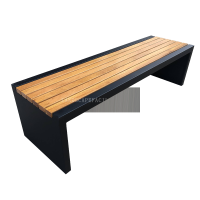Welcome to the website for landscape facilities products and knowledge.
How does the design of the trash can impact its resistance to dents or deformation?
The design of a trash can plays a critical role in its ability to resist dents and deformation, ensuring longevity and functionality. Several factors contribute to this resilience, including material selection, structural engineering, and shape optimization.
1. Material Choice: High-density plastics, stainless steel, or reinforced polymers are commonly used for their durability. Thicker gauges or layered composites enhance resistance to impacts and pressure.
2. Structural Integrity: Features like reinforced bases, ribbed walls, or internal supports distribute stress evenly, preventing localized damage. A well-engineered frame can absorb shocks without warping.
3. Shape and Geometry: Cylindrical or rounded designs often outperform angular ones, as curved surfaces disperse force more effectively. A tapered top can also reduce the risk of crushing under stacked loads.
4. Surface Treatments: Coatings like powder coating or anodizing add a protective layer, reducing scratches and dents from everyday use.
By prioritizing these design elements, manufacturers create trash cans that withstand harsh conditions while maintaining aesthetic appeal. Whether for home, office, or industrial use, a thoughtfully designed trash can offers both practicality and durability.
Related search:

Recommendation
Modern Stainless Steel Begonia Wood Park Chair Outdoor Courtyard Leisure Sun Protection Bench Long Seat